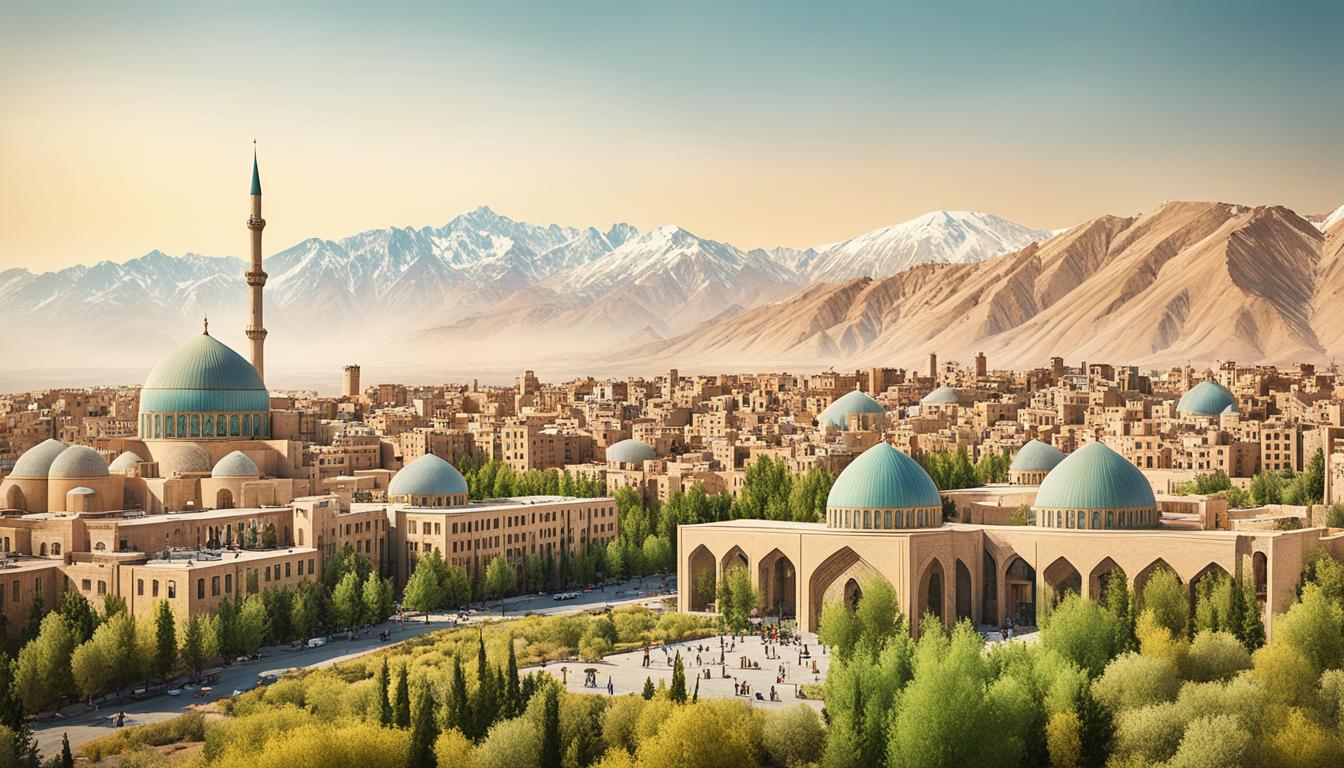Iraq Biodiversity and the Built Environment
Did you know that Iraq is at the forefront of sustainable urban planning and architectural design? While it may come as a surprise, this war-torn country is making remarkable strides in environmental conservation and wildlife preservation. With a focus on eco-friendly infrastructure and green building practices, Iraq is paving the way for a more sustainable future.
- Iraq is committed to sustainable development and environmental conservation.
- Women and youth play a crucial role in driving green building initiatives in Iraq.
- Solar energy solutions are being implemented to address the country’s energy challenges.
- Notable architectural buildings and sites in Iraq showcase sustainable design.
- The focus on green buildings aims to promote resource efficiency and create a more sustainable future for Iraq.
Sustainable Design and Construction Practices in Iraq
In Iraq, sustainable design and construction practices are at the forefront of efforts to promote energy efficiency, utilize green building materials, and adopt environmentally responsible construction methods. These practices contribute to minimizing energy consumption, reducing greenhouse gas emissions, and improving indoor air quality. Iraq is making significant progress in promoting sustainable development and mitigating the impact of climate change through its commitment to green construction practices.
Energy-Efficient Buildings: One of the key focuses of sustainable design and construction in Iraq is the creation of energy-efficient buildings. These buildings are designed to optimize energy consumption by incorporating features such as efficient insulation, LED lighting, and smart energy management systems.
Utilization of Green Building Materials: Iraq is also embracing the use of green building materials, which are sourced and manufactured in an environmentally responsible manner. Materials such as recycled steel, bamboo, and sustainably harvested wood are being utilized to reduce the environmental impact of construction.
Environmentally Responsible Construction Methods: The adoption of environmentally responsible construction methods is an integral part of sustainable design practices in Iraq. These methods include techniques such as waste reduction, water conservation, and proper disposal of construction waste to minimize the environmental footprint of construction projects.
“Sustainable design and construction practices in Iraq aim to create buildings that are not only energy-efficient but also environmentally responsible, contributing to a greener and more sustainable future for the country.”
The implementation of sustainable design and construction practices in Iraq not only has environmental benefits but also economic advantages. Energy-efficient buildings result in reduced operating costs, providing long-term savings for building owners and occupants. Additionally, the use of green building materials promotes local industries and supports economic growth.
By adopting these sustainable practices, Iraq is taking significant steps towards achieving its goals for sustainable development and addressing the challenges of climate change. Continued efforts and investment in sustainable design and construction will pave the way for a more environmentally friendly and resilient built environment in Iraq.
The Benefits of Sustainable Design and Construction
The implementation of sustainable design and construction practices in Iraq offers numerous benefits:
- Minimizes energy consumption and reduces greenhouse gas emissions.
- Improves indoor air quality and promotes healthier living environments.
- Reduces operating costs through energy efficiency.
- Supports local industries through the utilization of green building materials.
- Preserves natural resources by utilizing eco-friendly construction methods.
- Strengthens the resilience of buildings and communities to the impacts of climate change.
Women and Youth Involvement in Green Building Initiatives
Women and youth in Iraq play a vital role in driving positive change and promoting sustainable practices in the construction industry. Through their active involvement in green building initiatives, they contribute to shaping a more sustainable future for Iraq.
These inspiring individuals are dedicated to the development and implementation of green building practices, which encompass a wide range of sustainable practices in the construction industry. From energy-efficient designs to the utilization of environmentally friendly materials, they are at the forefront of advocating for eco-friendly construction methods.
Their efforts extend beyond individual projects and actively raise awareness on the importance of adopting sustainable practices in the construction industry. By sharing their knowledge, experiences, and success stories, they inspire others to join the movement towards a greener and more sustainable built environment.
Women and youth are driving forces in the construction industry, working tirelessly to bridge the gap between traditional construction practices and sustainable approaches. Through their innovative ideas and fresh perspectives, they bring new life to the industry, infusing it with sustainable values and practices.
Their involvement in green building initiatives highlights the critical role they play in shaping the future trajectory of the construction industry in Iraq. As trailblazers, they challenge existing norms, promote inclusivity, and pave the way for a more environmentally conscious and sustainable construction sector.
Ultimately, the dedication of women and youth inspires others to take action and embrace sustainable practices in their own projects. Their contributions not only benefit the environment but also foster economic growth, social equity, and community well-being in Iraq.
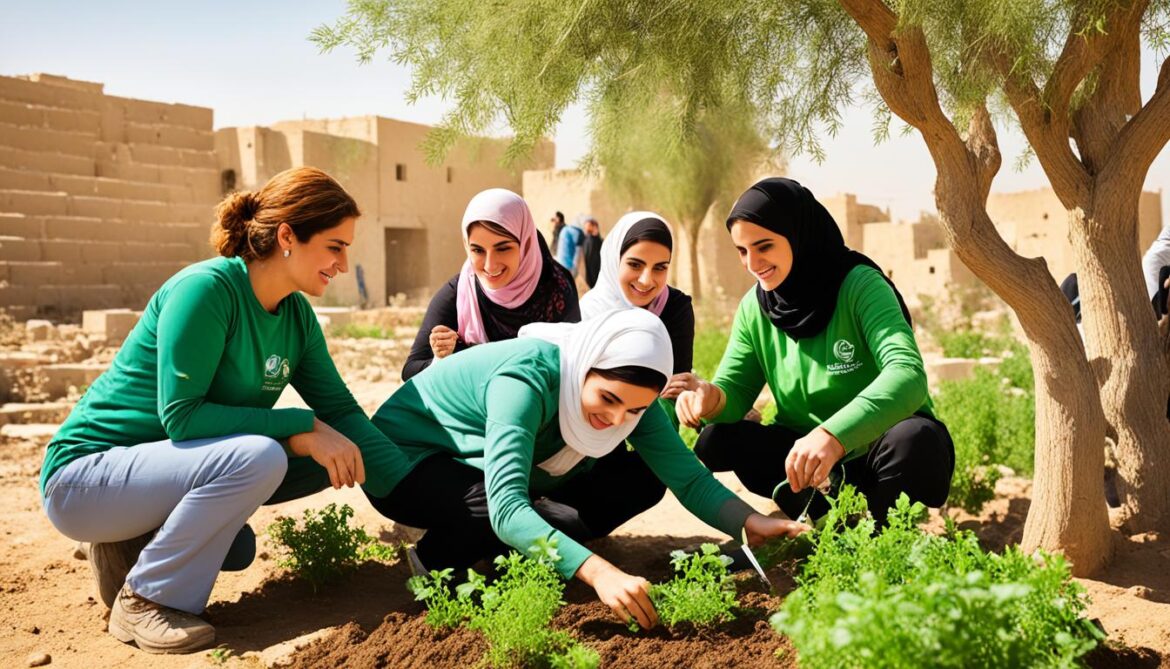
Leading by Example: Notable Projects
“We believe that sustainable practices are the key to building a better future for Iraq. Through our projects, we aim to showcase the immense potential of green building initiatives and inspire others to follow suit.” – Ana Hassan, Architect
One prime example of women and youth involvement in green building initiatives is the Wardak Residences, a sustainable housing development located in Baghdad. Designed by architect Ana Hassan, the project incorporates energy-efficient features, including solar panels, rainwater harvesting systems, and passive cooling techniques. With its focus on sustainable design and construction practices, the Wardak Residences sets a benchmark for future residential developments in Iraq.
| Benefits of Women and Youth Involvement in Green Building Initiatives |
|---|
| 1. Diversification of perspectives and ideas |
| 2. Increased focus on sustainable practices |
| 3. Promotion of gender equality in the construction industry |
| 4. Creation of job opportunities for women and youth |
| 5. Positive influence on sustainable urban development |
The active involvement of women and youth not only brings a diverse range of perspectives and ideas to the table but also ensures that sustainable practices are prioritized. Their participation contributes to the overall sustainability and resilience of the construction industry in Iraq.
Furthermore, their engagement in green building initiatives promotes gender equality in the construction sector. By breaking down gender barriers and embracing inclusivity, they create opportunities for women to excel in careers traditionally dominated by men.
The involvement of women and youth in green building initiatives also has profound social and economic advantages. It generates employment opportunities, empowering individuals and contributing to community development. Moreover, their efforts positively influence sustainable urban development, creating healthier living environments and reducing environmental impacts.
As Iraq continues to prioritize sustainable practices in the construction industry, the involvement of women and youth remains essential. Their dedication, innovation, and perseverance exemplify the potential for transformative change and the creation of a more sustainable built environment in Iraq.
Green Technology and Energy Solutions in Iraq
Iraq is at the forefront of implementing innovative green technology and energy solutions to address the country’s energy challenges and promote sustainable construction practices. One of the key areas of focus is solar energy, which offers a clean and renewable source of power.

Solar panels are being widely incorporated into buildings across Iraq, harnessing the abundant sunlight to generate electricity. This shift towards solar energy not only reduces the reliance on traditional fossil fuels but also helps to minimize greenhouse gas emissions, mitigating the impact of climate change.
The integration of solar energy solutions in construction projects also plays a significant role in achieving resource efficiency and a more sustainable future. By utilizing renewable energy sources like solar power, buildings can significantly reduce their energy consumption and carbon footprint.
In addition to solar energy, Iraq is exploring various other green technologies and energy solutions to optimize energy efficiency and conservation. These include:
- Energy-efficient lighting systems
- Smart building management systems
- Renewable heating and cooling technologies
- Waste-to-energy systems
By adopting these green technologies and energy solutions, Iraq aims to create a more sustainable built environment that prioritizes environmental conservation and reduces the country’s overall energy consumption.
Notable Green Buildings and Sites in Iraq
Iraq is proud to house a collection of remarkable green buildings and sites that showcase sustainable design and eco-friendly practices. These structures reflect Iraq’s dedication to sustainable development and environmental conservation. Let’s explore some notable examples:
Lalish Temple
Lalish Temple, situated in the Duhok Governorate of Iraq, is a sacred pilgrimage site for the Yezidi community. It is not only a testament to religious heritage but also an exemplar of sustainable design. The temple incorporates eco-friendly materials and innovative technologies, harmonizing with its natural surroundings. By integrating green building practices, Lalish Temple demonstrates a commitment to preserving the environment while honoring cultural traditions.

Al Mutanabbi Street
Al Mutanabbi Street, located in Baghdad, is renowned as a cultural and literary hub. This vibrant street showcases sustainable design principles integrated into its infrastructure. The street is lined with LEED certified buildings, which adhere to rigorous environmental standards. These buildings incorporate energy-efficient systems, utilize green building materials, and strive for maximum resource efficiency. Al Mutanabbi Street stands as a beacon of sustainable urban development in Iraq.
“Al Mutanabbi Street captures the essence of sustainable urban planning, promoting a harmonious coexistence between nature and modern infrastructure.” – Sustainable Architecture Magazine
These green buildings exemplify Iraq’s commitment to sustainable design, energy efficiency, and environmental conservation. Through the integration of innovative technologies and the utilization of green building materials, Iraq is creating a more sustainable future for generations to come.
Effects of Climate Change on Iraq’s Fragile Ecosystems
Iraq is not immune to the impacts of climate change. The country is facing a range of challenges that are directly related to the changing climate. Rising temperatures, decreased precipitation, and increased frequency of extreme weather events are just a few of the consequences being experienced. These changes have far-reaching effects on Iraq’s fragile ecosystems, causing significant environmental impact and posing urgent threats.
One of the most concerning effects of climate change is the issue of water scarcity. As precipitation patterns shift and temperatures rise, water sources become increasingly scarce. This has a direct impact on the availability of clean water for both human consumption and agricultural purposes. The scarcity of water disrupts ecosystems, leading to the decline of aquatic species and increased vulnerability of plants and animals that rely on water for survival.
“Water scarcity disrupts ecosystems, leads to the decline of aquatic species and increases vulnerability.”
Biodiversity loss is another significant consequence of climate change in Iraq. The changing climate disrupts the delicate balance within ecosystems, leading to the loss of plant and animal species. As habitats shift and become inhospitable, many species struggle to adapt or survive. This loss of biodiversity not only has ecological consequences but also impacts the livelihoods and cultural heritage of local communities.
Additionally, climate change contributes to the process of desertification, a phenomenon where fertile land turns into arid desert. Iraq is particularly vulnerable to desertification due to its dry climate and limited water resources. As temperatures rise and droughts become more frequent, vegetation cover decreases, and the land becomes susceptible to erosion and degradation. Desertification further exacerbates water scarcity issues and threatens agricultural productivity.
Health Impact and Urgent Action
The effects of climate change in Iraq also have significant health implications. Increased temperatures and changes in weather patterns create favorable conditions for the spread of diseases and pests. For example, extreme heatwaves can pose a risk to vulnerable populations, especially the elderly and those with respiratory conditions. There has been a noticeable increase in asthma cases, highlighting the direct impact of climate change on public health.
Addressing the effects of climate change on Iraq’s fragile ecosystems requires urgent action and collaboration on multiple fronts. It is crucial to reduce greenhouse gas emissions, promote sustainable practices, and invest in climate change adaptation strategies. Efforts to mitigate climate change should prioritize the preservation of biodiversity, the conservation of water resources, and the restoration of degraded ecosystems.

By taking proactive measures, Iraq can build resilience and ensure the long-term sustainability of its ecosystems. This includes integrating climate change considerations into policymaking, investing in renewable energy sources, and promoting sustainable land and water management practices. Collaboration among stakeholders, including government agencies, scientific institutions, civil society, and international partners, is key to achieving effective and sustainable solutions.
Adaptation Measures for Climate Change in Iraq
Iraq is facing the impacts of climate change across various sectors, necessitating the implementation of adaptation measures to address these challenges. These measures encompass a range of strategies aimed at promoting resilience and sustainable development.
Sustainable Water Resource Management
One of the crucial adaptation measures involves sustainable water resource management. As climate change exacerbates water scarcity in Iraq, it is essential to implement practices that optimize water usage, promote conservation, and enhance water storage and distribution systems. By investing in the sustainable management of water resources, Iraq can ensure continuous access to clean water for its population and maintain the stability of its agricultural sector.
Resilient Agriculture Practices
The agriculture sector is particularly vulnerable to the impacts of climate change. To mitigate these risks, Iraq can adopt resilient agriculture practices that are less reliant on traditional methods and more adaptive to changing climatic conditions. This includes the promotion of drought-resistant crop varieties, efficient irrigation techniques, and the implementation of climate-informed farming practices. By adopting these measures, Iraq can enhance food security and sustain agricultural productivity in the face of climate variability.
Strengthening the Health Sector
The health sector in Iraq plays a vital role in responding to the challenges posed by climate change. Strengthening healthcare infrastructure, improving disease surveillance systems, and enhancing public health preparedness are vital adaptation measures. By investing in the health sector’s capacity to address climate-related health risks, Iraq can effectively mitigate the potential impacts of climate change on public health and ensure the well-being of its population.
Conserving Natural Systems
The conservation of natural systems is crucial for preserving biodiversity, regulating ecosystems, and maintaining ecosystem services that support human well-being. Implementing adaptation measures that prioritize the protection and restoration of natural habitats and ecosystems can enhance the resilience of Iraq’s natural systems to climate change impacts. This includes the establishment of protected areas, the promotion of sustainable land management practices, and the integration of biodiversity conservation into national planning processes.
Improving Sanitation and Waste Management
The sanitation and waste sector in Iraq also requires adaptation measures to address the challenges posed by climate change. This involves improving waste management practices, enhancing waste treatment and disposal infrastructure, and promoting sustainable waste reduction and recycling initiatives. By implementing these measures, Iraq can minimize the adverse environmental impacts of waste generation and ensure the efficient use of resources in a changing climate.
Implementing these adaptation measures is crucial for Iraq to achieve its sustainable development goals, enhance its capacity to respond to climate change impacts, and build resilience across various sectors. By prioritizing sustainable water resource management, resilient agriculture practices, strengthening the health sector, conserving natural systems, and improving sanitation and waste management, Iraq can navigate the challenges of climate change and create a more sustainable and resilient future.
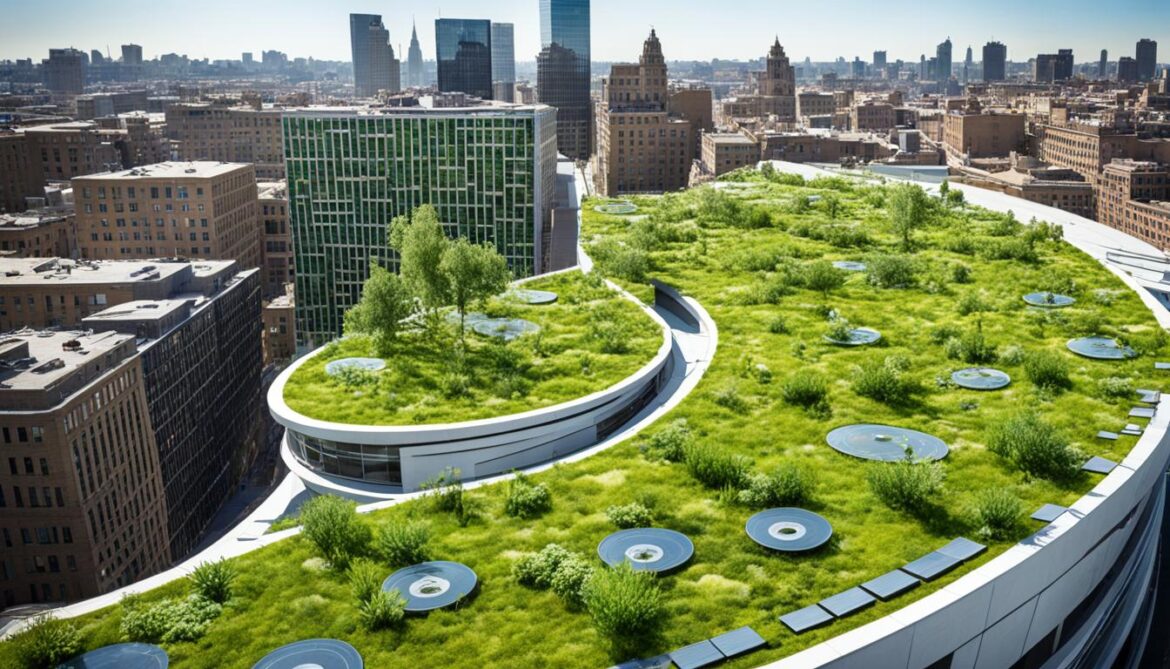
Protection and Management of Iraq’s Marshlands
The protection and management of Iraq’s marshlands are vital for safeguarding its rich biodiversity and maintaining the essential ecosystem services they provide. These marshlands, also known as the Mesopotamian Marshes or Ahwar, are one of the world’s most unique wetland ecosystems, covering an area of over 20,000 square kilometers in southern Iraq.
The marshlands are home to a diverse range of plant and animal species, including endangered and migratory birds, fish, and mammals. They serve as important breeding grounds, nurseries, and refuges for countless species, contributing to the overall ecological balance of the region.
To ensure the long-term preservation of these marshlands, concerted efforts are required in terms of protection, management, and sustainable use. Long-term planning strategies must be developed that consider the social, economic, and ecological dimensions of the marshlands. Stakeholder engagement is crucial to involve local communities, indigenous peoples, NGOs, and government agencies in decision-making processes, promoting a sense of ownership and responsibility.
Effective management plans must be put in place to address key challenges, such as water management, pollution control, and land degradation. These plans should include measures to restore and maintain the natural hydrological cycle, regulate water flow, and minimize the impact of industrial and agricultural activities on the marshlands.
Furthermore, recognizing the potential of the marshlands as a World Heritage site is essential for their enhanced protection and management. Seeking World Heritage listing for the marshlands will provide international recognition and support, encouraging sustainable conservation practices and attracting funding for restoration and preservation efforts.
Management Plan for the Marshlands
| Key Components | Description |
|---|---|
| Hydrological Restoration | Implement measures to restore the natural water flow and maintain the hydrological balance of the marshlands, including controlling the inflow and outflow of water. |
| Biodiversity Conservation | Develop and enforce regulations to protect the diverse range of plant and animal species in the marshlands, focusing on preserving their habitats and ensuring sustainable wildlife management. |
| Community Engagement | Involve local communities, indigenous peoples, and relevant stakeholders in decision-making processes, empowering them to actively participate in the protection and sustainable use of the marshlands. |
| Ecosystem Monitoring | Establish monitoring programs to regularly assess the health of the marshlands, including water quality monitoring, habitat assessment, and biodiversity surveys. |
| Sustainable Tourism | Promote responsible and sustainable tourism practices in the marshlands to generate income for local communities while minimizing negative environmental impacts. |
By implementing comprehensive protection and management strategies, Iraq can ensure the long-term conservation of its marshlands and their invaluable biodiversity. These efforts will not only preserve a unique natural heritage but also contribute to the sustainable development and well-being of local communities and future generations.
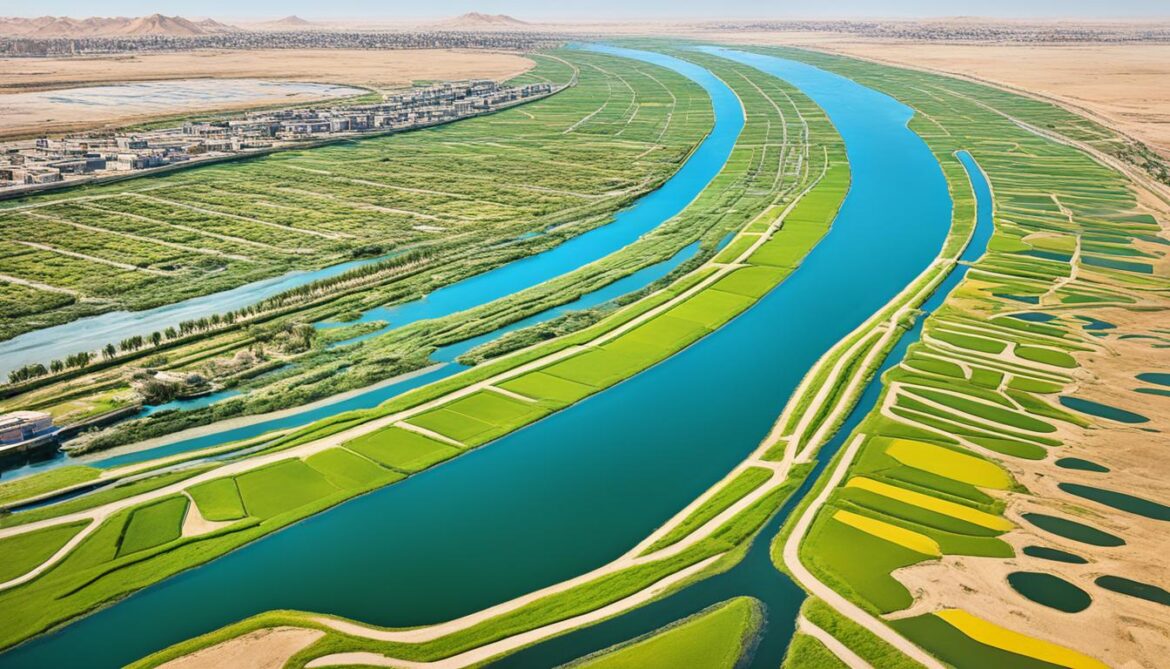
Network Development for Conservation Efforts in Iraq
Developing networks and collaborations among stakeholders is crucial for effective conservation efforts in Iraq. By fostering stakeholder engagement and collaboration, Iraq can maximize the impact of its conservation initiatives and achieve sustainable outcomes.
Building Capacity for Conservation
Capacity building plays a vital role in strengthening conservation efforts in Iraq. By providing training and resources to individuals and organizations involved in environmental conservation, Iraq can enhance their skills and knowledge, enabling them to contribute more effectively to preserving Iraq’s natural heritage.
Engaging with Local Communities
Involving local communities is essential for successful conservation in Iraq. By engaging with communities residing in or near conservation areas, stakeholders can foster a sense of ownership and responsibility for the protection and preservation of Iraq’s ecosystems. This engagement can take the form of community outreach programs, involvement in decision-making processes, and raising awareness about the importance of biodiversity conservation.
“Community involvement and empowerment are key components of sustainable conservation.”
Fostering Collaboration Among Organizations and Experts
Collaboration is key to addressing the complex challenges of conservation in Iraq. By fostering cooperation among relevant organizations, government agencies, and experts, stakeholders can exchange knowledge, share resources, and leverage their collective expertise to develop innovative conservation strategies. Collaboration can also facilitate the implementation of sustainable practices and the adoption of best management approaches.
Sharing Knowledge and Resources
Sharing knowledge and resources is essential for the success of conservation efforts in Iraq. By establishing networks and platforms for information exchange, stakeholders can learn from each other’s experiences, access valuable data and research, and identify emerging conservation techniques. This collaborative approach promotes continuous learning, enables evidence-based decision-making, and ensures the efficient use of limited resources.
| Benefits of Network Development for Conservation Efforts |
|---|
| Enhanced coordination and communication among stakeholders |
| Increased efficiency in resource allocation and management |
| Accelerated dissemination of best practices and innovative approaches |
| Strengthened advocacy for conservation policies and funding |
| Improved monitoring and evaluation of conservation initiatives |
By prioritizing network development, capacity building, stakeholder engagement, and collaboration, Iraq can establish a resilient framework for conservation. Working together, stakeholders can overcome challenges, drive positive change, and ensure the sustainable preservation of Iraq’s invaluable natural heritage.
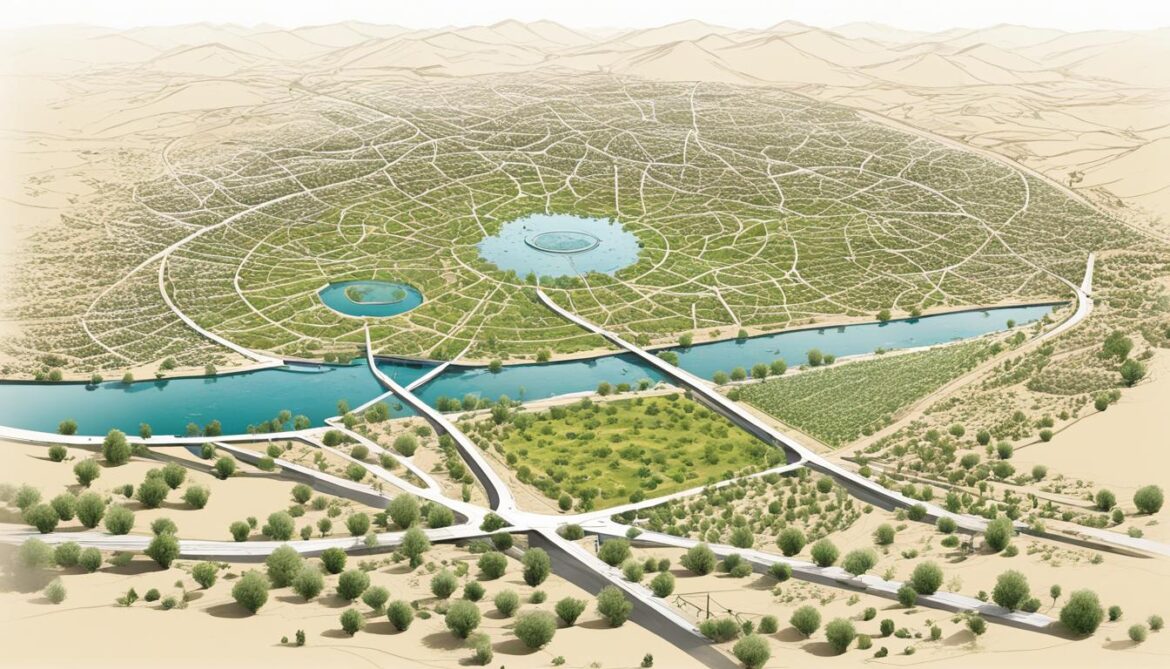
Conclusion
Iraq’s commitment to sustainable development, green building practices, and biodiversity conservation is evident in its efforts and achievements. The nation has made significant strides in investing in sustainable design, engaging women and youth in green building initiatives, implementing green technology, and protecting natural ecosystems. These actions are paving the way for a more sustainable and resilient future in Iraq.
By incorporating sustainable design principles into urban planning and architectural practices, Iraq is promoting sustainable urban development. The focus on resource efficiency and eco-friendly infrastructure is not only reducing environmental impact but also creating healthier and more livable cities for its residents.
Conservation of Iraq’s diverse ecosystems and wildlife is a priority, recognizing the value they bring to the environment and society. Efforts to protect and manage areas like the marshlands are crucial in safeguarding biodiversity and preserving ecosystem services. Moreover, Iraq’s dedication to collaboration and network development among stakeholders ensures a holistic approach to conservation and sustainable development.
Looking ahead, Iraq’s future plans should build on the progress made so far. Continued dedication, collaboration, and innovation are essential in achieving long-term sustainability goals. By fostering partnerships, implementing effective policies, and integrating sustainable practices into all aspects of development, Iraq can create a greener, more prosperous, and sustainable future for generations to come.
FAQ
What are the key sustainable design and construction practices in Iraq?
The key sustainable design and construction practices in Iraq focus on energy-efficient buildings, the utilization of green building materials, and the adoption of environmentally responsible construction methods. These practices aim to minimize energy consumption, reduce greenhouse gas emissions, and improve indoor air quality.
How are women and youth involved in green building initiatives in Iraq?
Women and youth play a vital role in green building initiatives in Iraq. They are actively involved in the development and implementation of sustainable practices in the construction industry, raising awareness, and inspiring others to adopt eco-friendly practices.
What green technology and energy solutions are being implemented in Iraq?
Iraq is implementing green technology and energy solutions, including solar energy, to address the country’s energy challenges and promote sustainable construction. Solar panels are being incorporated into buildings to generate clean and renewable electricity, reducing greenhouse gas emissions and minimizing energy consumption.
Can you provide examples of notable green buildings and sites in Iraq?
Iraq is home to notable green buildings and sites, such as Lalish Temple, Al Mutanabbi Street, and several LEED certified buildings. These structures showcase sustainable design and eco-friendly practices, integrating innovative technologies and green building materials.
What are the effects of climate change on Iraq’s fragile ecosystems?
Climate change impacts Iraq’s fragile ecosystems, leading to rising temperatures, decreased precipitation, and increased extreme weather events. These changes contribute to water scarcity, biodiversity loss, desertification, and health issues, such as increased asthma cases.
What adaptation measures are being implemented to address climate change in Iraq?
Iraq is implementing various adaptation measures to address the impacts of climate change. These measures include sustainable water resource management, resilient agriculture practices, strengthening the health sector, conserving natural systems, and improving sanitation and waste management.
Why is the protection and management of Iraq’s marshlands important?
The protection and management of Iraq’s marshlands are essential for preserving biodiversity and maintaining ecosystem services. Long-term planning, stakeholder engagement, and the development of management plans are vital to ensure their conservation and sustainable use.
How can Iraq enhance conservation efforts through network development?
Iraq can enhance conservation efforts by developing networks and collaborations among stakeholders. This includes building capacity, engaging with local communities, and fostering cooperation among relevant organizations and experts to share knowledge and resources.
What is Iraq’s commitment to sustainable development?
Iraq is committed to sustainable development and green building practices. By investing in sustainable design, engaging women and youth, implementing green technology, and protecting natural ecosystems, Iraq is paving the way for a more sustainable and resilient future.




